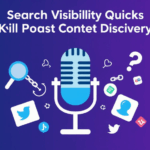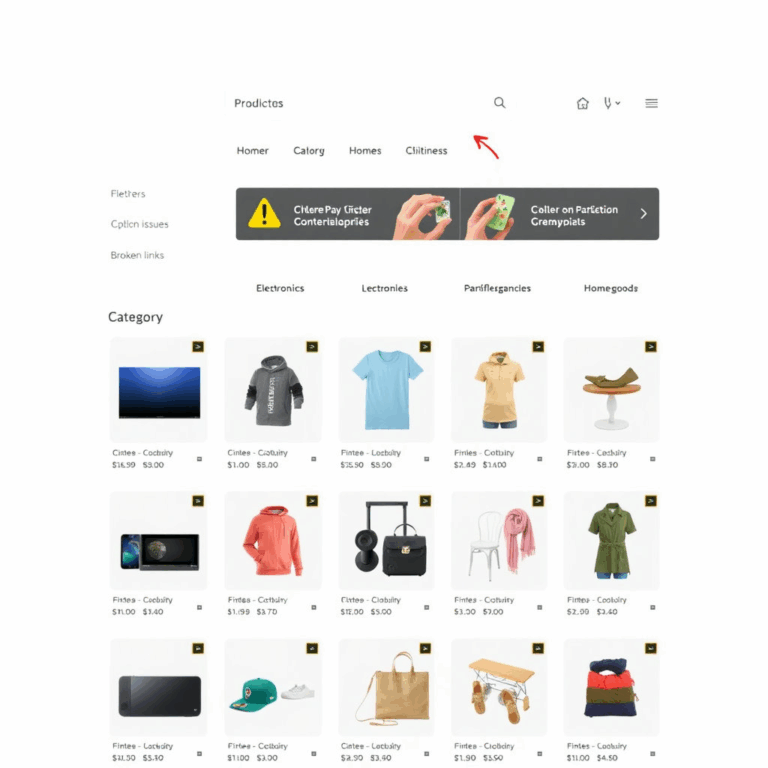Fixing Google My Business Insights When the Data Makes No Sense
Why Your Search Views Number Keeps Jumping
So the first time I seriously looked at Google My Business (GMB) Insights, I stared at the “Search views” stat and thought: no way did 1,200 people search for our business name this week. We are not that interesting. Then the next week it showed 190. I didn’t touch anything. It just dropped off a cliff.
Turns out, that stat actually includes visibility from a range of things — not just direct searches. It’s aggregated data pulled from Google Maps, Search, and even some voice traffic (yeah, folks yelling at their Nest Audio counts too). But here’s the behavior bug: the update cycle is unpredictable. We’re talking batches—sometimes it delays by days, even a full week. The jump wasn’t real-time interest; it was just a timing quirk in their data publish cycle.
It’s especially bad if you rely on it to make decisions about daily campaigns or reporting to clients. Don’t. Treat Search Views as a broad-strokes trend line, not a live dashboard.
Queries Data Doesn’t Match Search Console? Good Luck
The Queries section of GMB Insights looks like a dream. Clean little phrases like “best pizza near me” or “24 hour locksmith” tied to your visibility. Until you try to match that to Google Search Console. Then it all falls apart.
I’ve tried to correlate the top queries from Insights with performance numbers in Search Console—same timeframe, same business. About 70% overlap. But then you get wildcard ones in GMB like “muffler shop open late” that don’t show up anywhere else, even if you filter Console with regex tricks. I’ve opened threads on the support forums about this too, and the responses are basically, “yeah, they’re different systems.”
It’s because GMB Insights focuses on *discovery queries* inside Maps and local interfaces, not just organic search listings. So if someone taps around in the Maps app and doesn’t even reach your site, GMB still logs that query. Console doesn’t. Completely different visibility models.
The Actions Panel Is Misleading by Design
“Customer actions” sounds straightforward — until you try to explain why someone clicked “Website” from your listing and you still saw zero visits in GA. I had one recovery client, a plumber, who was showing 78 website taps in GMB for January. Google Analytics? Three new sessions TOTAL from Google Maps — across the whole month.
Found out GMB doesn’t guarantee UTM tagging unless you manually add tracking parameters to your listing’s website link field. So by default, all those taps come in as referrals, or worse, direct/no source. If you want those metrics to be useful, add a UTM link with campaign codes explicitly — not in Google Ads, but straight in the GMB dashboard’s “Website” field.
https://joesplumbing.com/?utm_source=google&utm_medium=local&utm_campaign=gmb_profileBut here’s the kicker: Even after adding UTMs you still won’t track button taps like “Directions” — those are black box interactions. Can’t tag them, can’t analyze bounce or exit. It’s only in their system. Basically, treat Action data more like a weird weather report than an analytics tool.
Photo View Counts Are Wildly Inflated
Never use photo view counts as a performance KPI. Seriously. One client’s donut shop listing showed 18,000 photo views in a month. We were hyped, until we realized their location was showing on nearly every searches like “coffee near me” or “breakfast downtown,” even though we weren’t ranking above position six. The photo was being preloaded in those long horizontal Maps results carousels — that’s what inflates the metric.
Here’s the weird, undocumented bit: that number counts impressions wherever the photo loads, not user engagement. That includes autoloading thumbnails that users scroll right past. If your image pops up on someone’s route planner for a half-second, it counts. Someone at Google confirmed this back in a random Google Business Profile Help thread but didn’t add it to the docs.
So it looks like growth, but it’s just distribution bloat. Use photo stats to gauge your image rotation cadence, not reach. Better test: update a single image and see which one becomes default on Desktop Maps. That’s the real power metric — what Google associates first with your listing.
Local Ranking Shifts Can Trigger Insight Gaps
I hit this one randomly while trying to help a small chain of food trucks in Austin. They’d show steady discovery impression growth on GMB, then out of nowhere, a full week of zeros. Not even drops. Literally blank.
Much later someone mentioned in a Twitter thread that changing map cluster category alignment can knock listings out of a local pack temporarily. And sure enough, Google had updated their Location type from “Restaurant” to “Food Truck” — which reindexed them into a smaller competitive cohort. That brief transition, even though the business was still active and open, broke the Insights feed for days. It doesn’t backfill either — once that week’s chart reads null, it stays that way.
Keep screenshots if you notice a flatline. Disappearing data isn’t proof of inactivity. It’s usually tied to a temporary category mismatch or Google experimenting with your neighborhood cluster structure.
Discovery vs. Direct Searches Is Heavily Cached
The Discovery/Direct search pie chart seems useful until you realize that once Google categorizes someone as a matching visitor, their future searches are often pre-sorted between Direct or Discovery based on cache, not behavior.
An actual test I ran: I opened ten incognito sessions, searched different variations of our brand name (some with typos, even), visited the local panel, clicked “Website” then closed. Logged nothing under direct search increase for three days — until suddenly, a surge appeared all at once, lumped into Direct. Suspiciously neat chart jump.
Best theory so far? Google batches recognition of patterns once it hits a threshold and then retroactively assigns type if the query resolves to your business name. So you could have tons of brand-based behavior under Discovery at first, then it flips over and drags the numbers around retroactively.
That also means changing your business name (even slightly) resets much of that behavior mapping. If you go from “The Bike Stop” to “Bike Stop Co.” you might wipe out three months of trend continuity.
Tips That Actually Help You Interpret GMB Insight Junk
- Add manual UTM tags to your website link in GMB — and check them regularly, because edits can silently revert them.
- Export your full Insights history once a month. Once gone, it’s unrecoverable — no archival access.
- Use Google Maps query previews (type your service + location) in incognito mode to guess what GMB is classifying as discovery triggers.
- Photo metrics only matter if you swap them out every 60–90 days. Google loves churn.
- Drop pins to test reproximity clustering. GMB insights doesn’t show you this, but local grouping oscillates based on foot traffic patterns.
- Track hours updates — even one mistake for “holiday hours” can tank visibility for four days.
- Never treat GMB stats as absolute truth. Correlate with Search Console, Analytics, and physical foot traffic, even manually if needed.
Most Frustrating Glitch: The Category Change Desync
This happened quiet and fast. I’d changed a business’s primary category from “Coffee Shop” to “Café” — because frankly, they sold full meals and wanted to rank for brunch terms. Within 48 hours, their listing went into a data abyss. Nothing updated. No insights numbers at all. Reviews and photos still visible, but the entire Insights section for the listing just… froze.
This desync lasted over two weeks. I eventually chatted with Google Business Profile Support and they said this can happen “during certain reclassification propagation events.” What that basically means is: if your category change nudges you outside the inferred data cluster Google had you assigned to, it starts a full reindex — and until it propagates, no Insights.
This isn’t documented anywhere. There’s no progress bar. Just sudden silence. The ironic part? You mostly discover this after a few days of, “Wait, where’d the charts go?” and swearing at your interface.














